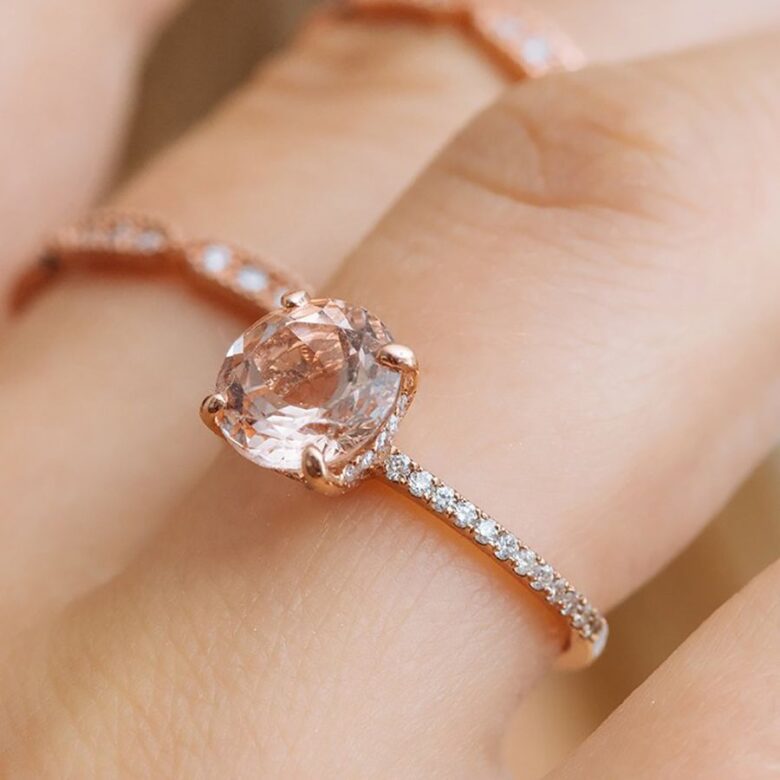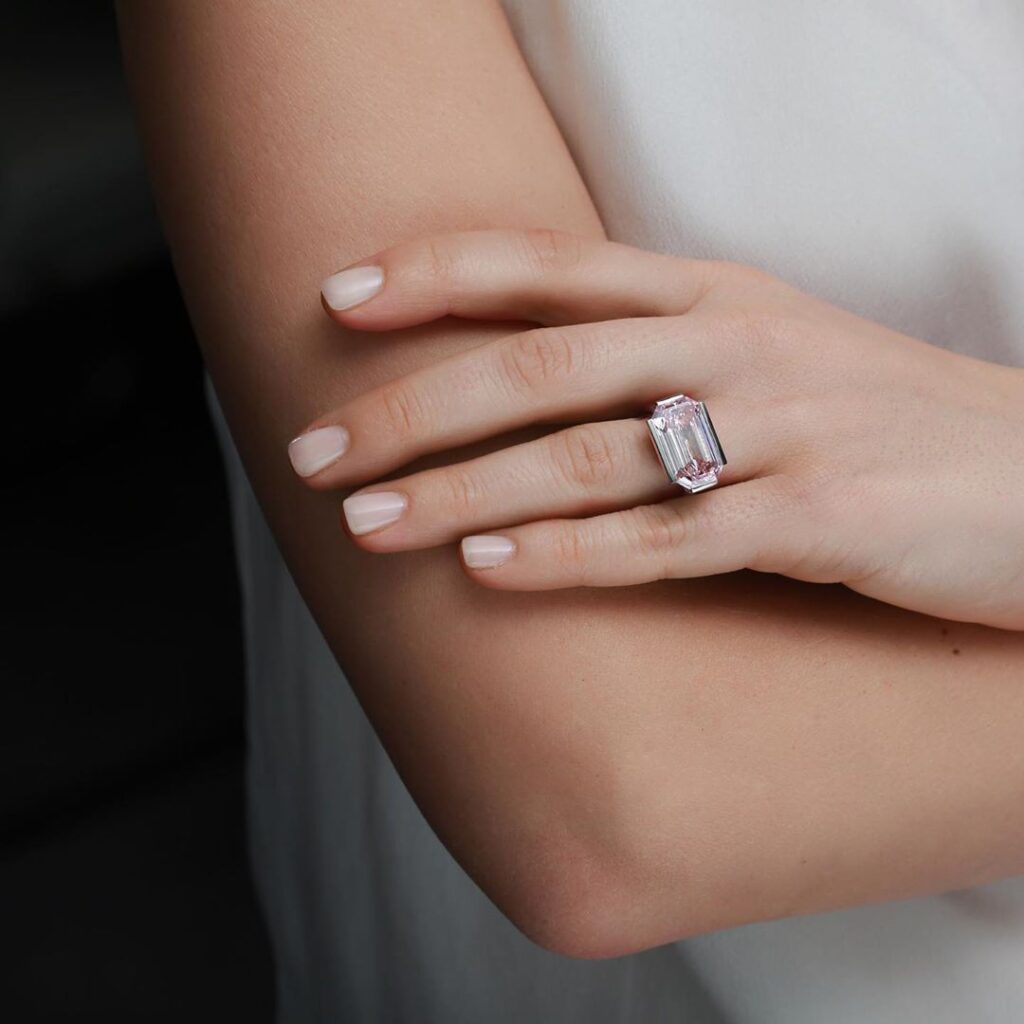Buying an engagement ring is one of the most exciting experiences you get to do once in a lifetime. However, it can be a stressful event. You’ll have plenty of things to consider like the size, shape, diamond, metal, and other essential factors. Not to mention that an engagement ring is a huge investment, too. For that reason, you’re pressured to ensure that your first and only choice is the perfect one.
Regardless if you’re shopping for an engagement ring with your fiancee or you’re heading to the shop on your own, there are some rules you’ll need to remember that’ll help bring you closer to your dream engagement ring.
Read on below to know the eight basic rules in shopping for an engagement ring:
1. Determine Your Budget

Everything starts with the budget; it’s so hard to shop around without considering your budget. As mentioned earlier, engagement rings are usually expensive, so you might as well make sure that you have a good budget fit for that kind of expense. For instance, you may have heard of myths saying that an engagement ring is worth three months of your salary.
However, buying an engagement ring doesn’t mean that you should drown yourself in overtime work or go into major debts. According to Ritani, a jeweler company, there will always be the right ring for your price range. So, don’t give up on looking and end up hastily buying the wrong one. With time, you’ll find that perfect engagement ring!
Getting married and beginning a new life together are already costly processes. Thus, it’s best to buy an engagement ring that you’re financially comfortable with so you may avoid any debts in the future. This will also reduce your anxiety and financial stress as you begin your life together.
But what if you’ve already bought an engagement ring and you want something else which is more affordable? In that case, it’s important to know that there are ways to resolve this dilemma. According to Love&Lavender, a reliable resource website, you can sell an engagement ring if you want to get some money from it. This can be an excellent idea if you want to replace an expensive engagement ring with a more affordable one to stick with your budget. Doing so allows you to save some money which you can use on other related expenses instead.
With all these things being said, buying an engagement ring can be tricky. But as long as you have a budget in place, looking for the perfect one will be much easier. Also, don’t lose sight of what’s really important: focusing on your partner and the excitement of getting wedded to the love of your life.
2. Narrow Down To The Shape That You Want
Before you jump right ahead to your ring’s carat or color, you need to figure out your desired shape first. The shape indicates the geometry of the stone. If your partner already knows what they want in terms of shape, they’ll surely narrow down your focus towards your hunt for the perfect engagement ring.
Take note that every shape is priced differently. Most often, the round cuts are the most expensive ones, while the marquise and pear cut is less expensive.
If the shape matters to you the most, you can gain more carats at a more agreeable price if you choose an alternative shape other than the classic round cut. It’s also best if you research first about ring cuts and shapes, then take note of at least two favorites in mind. After doing so, you now have a guide when hunting for the perfect engagement ring.
3. Choose The Setting

The setting of your engagement ring is the metal framework in which your stone is placed. There are numerous choices of ring settings for you to choose from, some of which may include:
- Prong Setting – A single diamond set in a traditional mounting, and it has four or six prongs. This is the most common setting out of all options. It’s also known as the claw setting because its prongs are like claws that hold the diamond in place.
- Bezel Setting – In this setting, a rim will hold the stone and surround the gem. This setting can either appear with scalloped edges, straight edges, or can be tailored into any shape to fit the stone.
- Channel Setting – This ring setting is often used for wedding bands. A Channel setting will also position the stones right next to each other without any metal separating them.
- Bar Setting – This one is quite similar to the Channel setting since it’s also used for anniversary and wedding bands. However, this can also be used for necklaces and bracelets. This type of setting consists of a band of diamonds in which each stone is held by a thin bar and divided between two stones.
- Gypsy Setting – This type is also known as burnish setting, shot setting, or flush mount setting. The diamond’s crown is the only exposed area for this type.
- Tension Setting – A tension-set setting, from the name itself, is the type in which the diamond is secured in place by the tension and pressure from the band’s metal, which is purposely done to ‘squeeze’ the stone.
- Cluster Setting – The setting uses a larger center stone and is then surrounded by several smaller stones. It’s tailored to create an elegant piece of a diamond ring from many smaller stones.
Getting the perfect combination of the shape and the setting is the key to getting that ring you’re looking for since it’s what sets the tone of the ring.
4. Pick Your Chosen Metal Band

Traditionally, engagement rings are made from white gold, yellow gold, platinum, or silver. But as years went by, more choices have become available, such as rose gold, white gold, and green gold.
Platinum may look too close like silver, but it’s way more expensive than the latter due to its greater density and it’s rarer, too. That’s why many people tend to choose platinum for their metal band because it’s durable and it’s also an excellent choice for people with sensitive skin.
Aside from platinum, you may also want to consider gold since it comes in various colors. Overall, the decision is yours, but make sure to consider your lifestyle, too, since some metals scratch way easier than others.
5. Choose The Stone
As you look around and shop for engagement rings, most often, the jewelers will already have the stone attached to the band. However, you may get a better deal if you’ll choose and purchase the diamond separately. This way, you’ll have more freedom regarding the stone’s shape: round, heart, pear, cushion cut, marquis, and more. The most timeless choice for a stone shape is the round solitaire.
To help you settle on an ideal decision towards your diamond, it’s best if you know the 4C’s (cut, clarity, color, and carat) first. The beauty and quality of each stone will differ base on which of the 4C’s you’ll prioritize the most.
- Cut – This is the number one decider of the beauty of your stone. It also determines how well the diamond’s cut unleashes its light.
- Clarity – This refers to the absence of blemishes and inclusions.
- Color – The lesser color the diamond has, the rarer.
- Carat Weight – Diamond’s carat weight determines the stone size.
Now that you know the 4Cs, start asking yourself, ‘which is the most important C for me?’ Knowing which of the four C’s you’ll prioritize will help narrow down your search.
Studying about the 4C’s is definitely worth your time, especially since it’s considered the universal language of diamonds and their quality. When you understand this language, you’ll feel more confident about your ability to buy the perfect diamond engagement ring for yourself or your partner.
6. Consider Your Partner’s Lifestyle

Suppose you now know all about the 4C’s, the choices of setting, and metal bands. However, your choice must not only be based on these technicalities. Remember, this ring is for your fiancée, so you have to make sure that it fits her lifestyle.
For this reason, you need to evaluate what your partner often does in her day-to-day living. Is your partner a sporty and athletic person?
This could mean that they don’t want a ring that carries a massive stone as it could be inconvenient for their routine. Is your partner fashion savvy and has a soft heart for jewelry? Getting them a big, fat, diamond engagement ring may swoon them. Does your partner love anything unique? Then, get them something customized and specifically tailored based on their favorites.
At the end of the day, your decision will be inspired by your partner and for your partner.
7. Get A Quality Jeweler
In searching for your jeweler, it may be best to hear referrals or recommendations from your friends and family who’ve previously worked with past jewelers. If they don’t have any leads, you could search up for jewelry stores that the Jewelers of America accredited or if they’re currently a member of GIA (Gemological Institute of America).
Moreover, don’t forget to ask about their return policy. This way, if your engagement ring isn’t what you hoped for, you’ll have the option to return it or at least exchange the stone.
On the other hand, there are also other factors that should be considered when getting a quality jeweler. Ensure you’re in safe hands by checking some client reviews and testimonials online, this allows you to know their reputation. Pay attention to both good and bad reviews to get some information about their service performance.
Another thing to look at when choosing a jeweler is the range of services they offer. In most cases, you want someone who offers a wide range of services, including the ability to provide maintenance and repairs when necessary. Lastly, if you’re looking for the best jeweler, make sure you’re comfortable with your prospect’s pricing structure. That way, you can have peace of mind knowing your engagement ring provider offers products within your project.
8. Plan Early

Don’t expect that as soon as you get out from a jewelry store, you’ll automatically have the engagement ring on your hand. It’ll often take a couple of weeks for the jeweler to set the stone, customize it, or engrave something on it, depending on what you requested.
This means you’ll also have time to save up before you fully pay for it by the time the engagement ring is released. So, if you’re planning to propose on a particular date, it’s best to start planning and working on your ring early.
Wrap Up!
While you must familiarize yourself with the basic rules of engagement ring shopping, remember that it’s even more important to be patient and stay calm during the process. Purchasing your engagement ring will feel like a good kind of adrenaline rush, wherein you feel butterflies in your stomach.
Don’t overthink about getting the perfect ring because you can always switch it up in the future if ever your partner won’t like it. Instead, focus on how you’re going to present yourself and your speech during the proposal!

